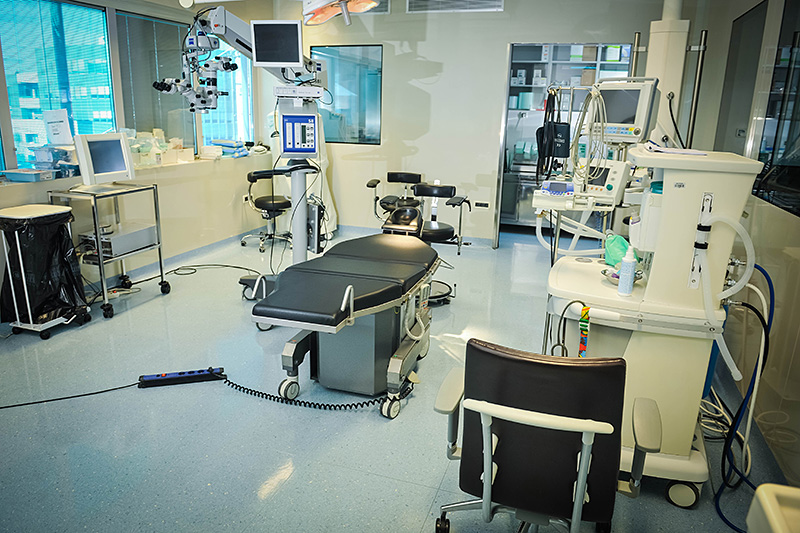What is retinal detachment?
Retinal detachment is a medical emergency that needs to be operated on as soon as possible, preferably within 24 hours. During retinal detachment, the retina breaks and a retinal hole is created. Aqueous humor enters through the retinal hole and detaches the retina from its base.

What are the symptoms of retinal detachment?
The patient sees the creation of dark curtains. When the detachment reaches the center of vision or macula, which can occur within 1-2 days, vision becomes very poor and the person can no longer read or recognize people.
What is the treatment for retinal detachment?
Retinal detachment is treated by surgery called vitrectomy. As the retina feeds only when stuck to the fundus, each retinal detachment can result in permanent retina damage. Therefore, the surgery should be performed as soon as possible and postponing it results in the poorer functional. In Svjetlost, we can organize the surgery within 24 hours during weekdays or holidays. The procedure is performed under local anesthesia with sedation. This means the patient's eye becomes numb. This method of surgery is completely painless. The surgery takes about an hour. After the surgery, the patient is discharged within 2 hours.
During vitrectomy, we enter the eye through 4 small incisions the size of 1 millimeter on the white part of the eye (sclera). During the surgery, we remove the vitreous which pulls on detached retina. The vitreous is later replaced by the normal aqueous humor produced by the eye and the eye functions normally. After removing the vitreous, retinal breaks are identified, retina reatached and retinal breaks sealed with laser..
What type of retinal tomponade is used after detachment surgery?
At the end of the suargery, gas or silicone oil is placed in the eye to hold retina in place until firmly aattached. In Svjetlost we generally use gas tamponade. The advantage of gas tamponade is that it dissapates from the eye within 2-6 weeks by itself, and no surgical removal is necesarry as with silicone oil. Retinal detachment diagnosed late are complicated with retinal scaring and folding. After membranes removal silicone oil is placed in the eye to unfold retina and provide longer acting tamponade. Silicone oil is removed from the eye within several months, but can remain in the eye for years if the eye was severely damaged. Sometimes, especially with severe retinal detachments, multiple procedures are necessary to achieve satisfactory results.
How long is the recovery and what about positioning?
After surgery, the eye is neither very red nor painful, and the recovery is quick. Eye drops and ointment should be applied during few weeks. No patching is necessary. Checkups are scheduled a day after the surgery, seven days after the surgery and 2-3 weeks after surgery. The patient needs to position himor herself cheek to pillow or face down for few days. In 10 days post uncomplicated retinal detachments repair, the patient can return to normal daily activities. During the entire recovery period, reading and working on the laptop or watching TV with both eyes is allowed.
Why should you choose Svjetlost?
In the case of retinal detachment, early detection and treatment is of a very essence, so contact us as soon possible so we can immediately organise your surgery and save the function of your vision, since delaying the surgery results in poorer final outcome. We can schedule surgery within 24 hours. Surgery is done in local anesthesia and patient is discharged within 2 hours from the hospital.Mostly we end up with gass tamponade so no additional surgery is necesary. Even though the surgery is performed under local anesthesia, anesthesiologist is present to monitor blood pressure, heart rate, respiration, blood oxygen and blood sugar and may additionally intervene, as necessary.

